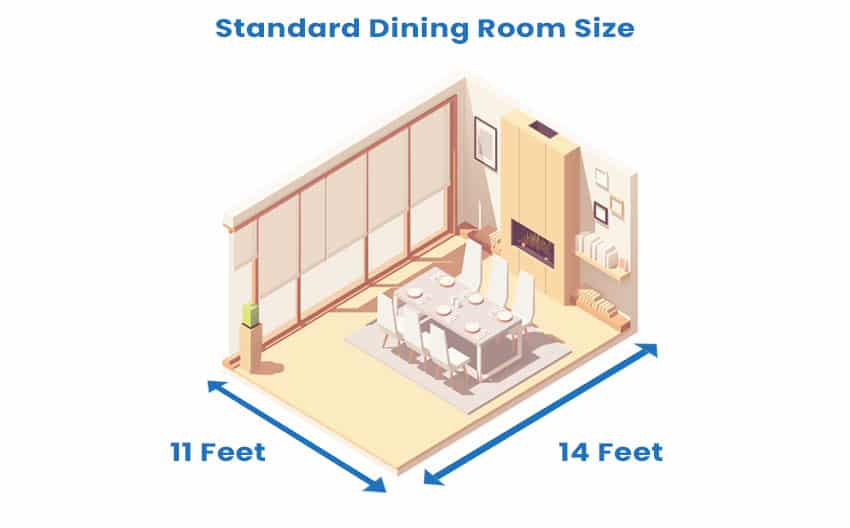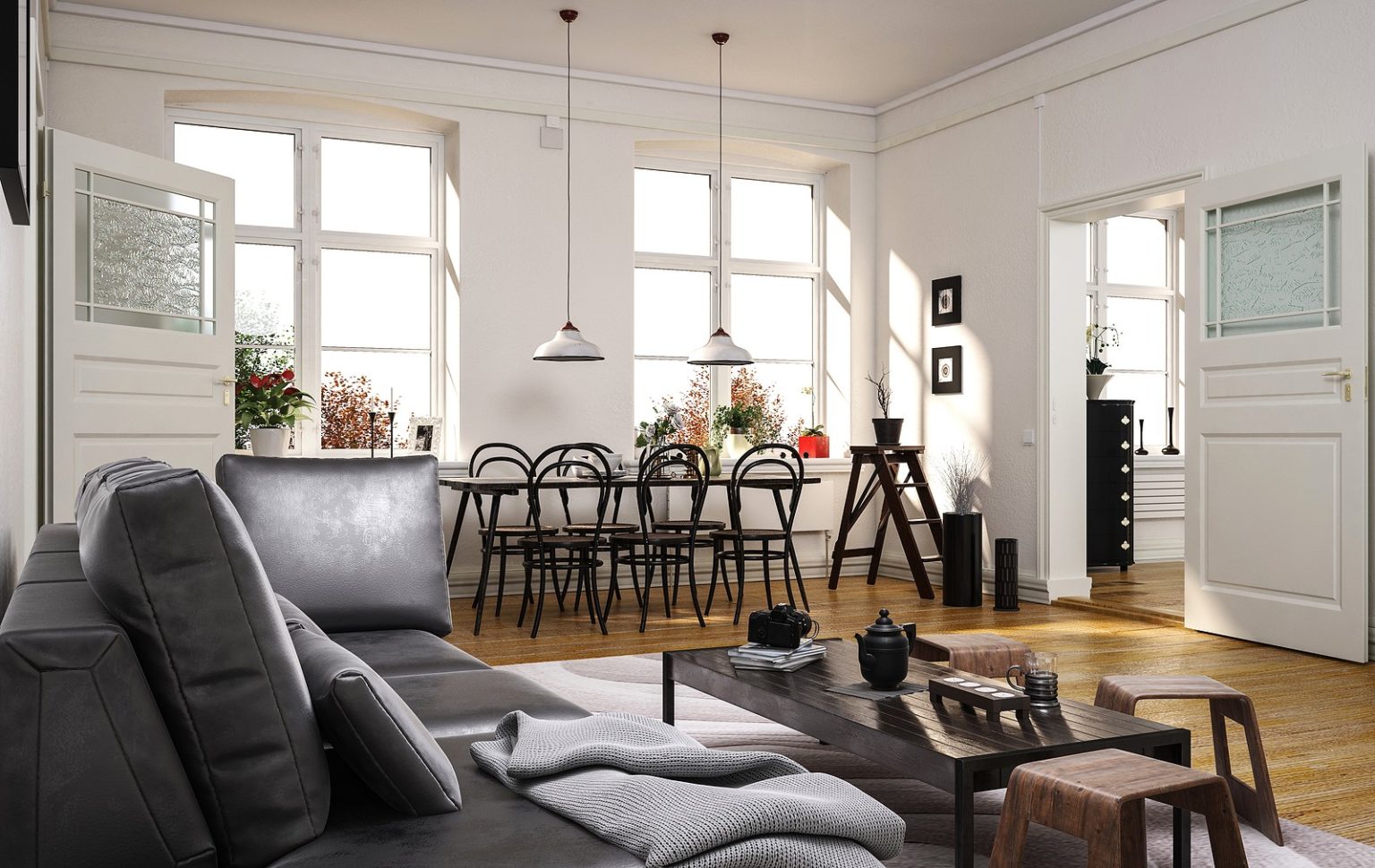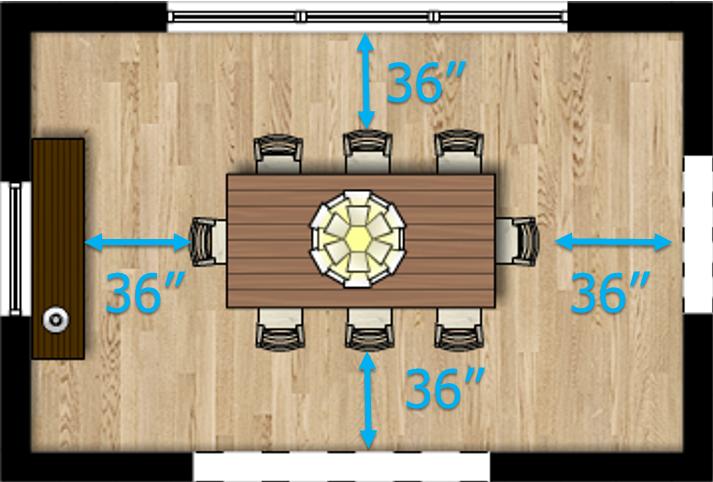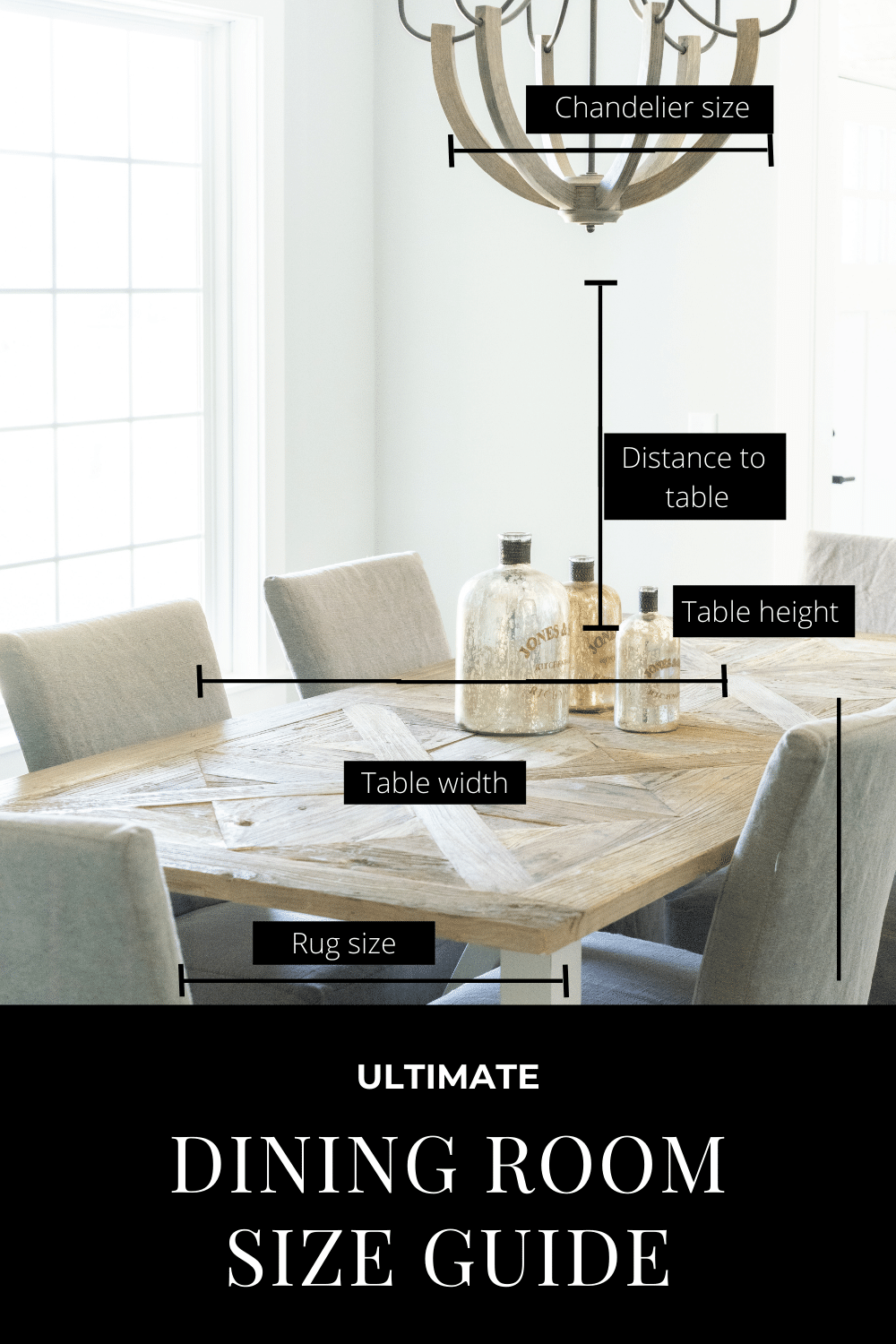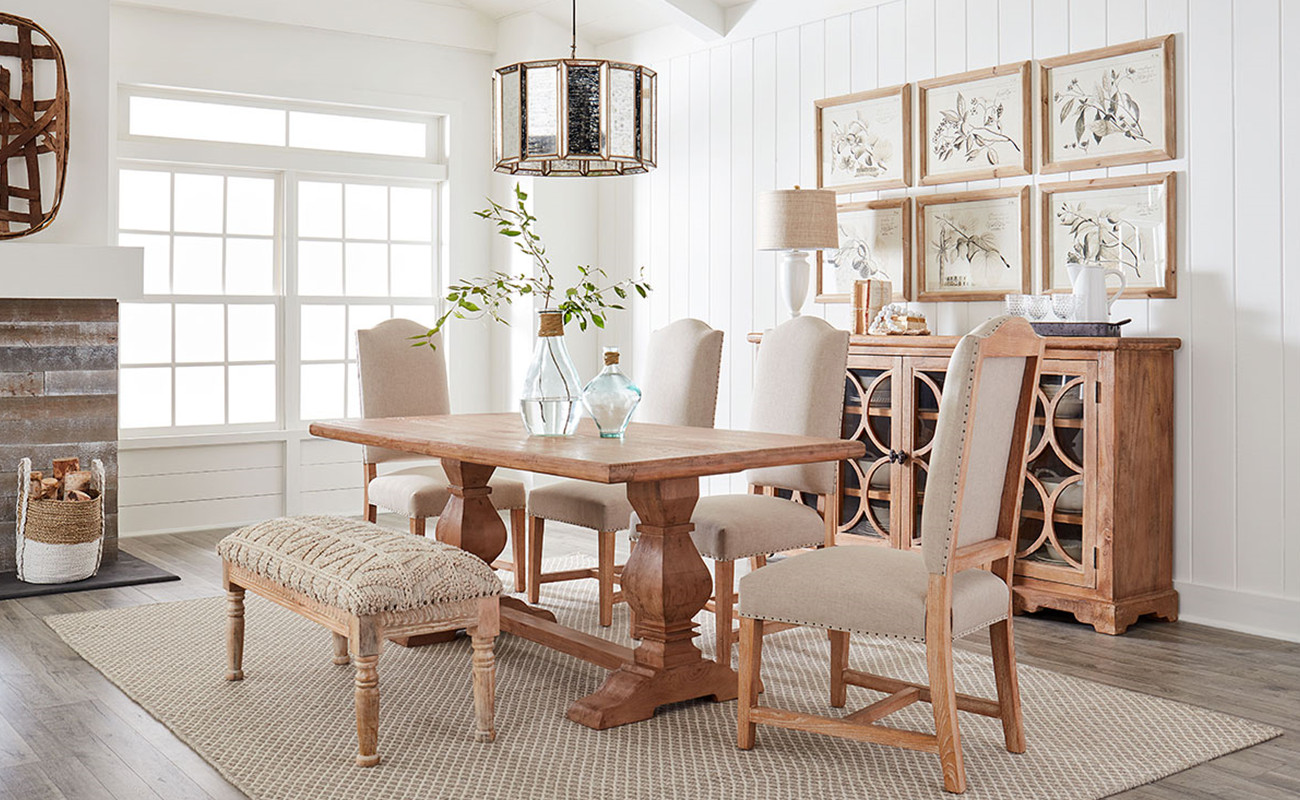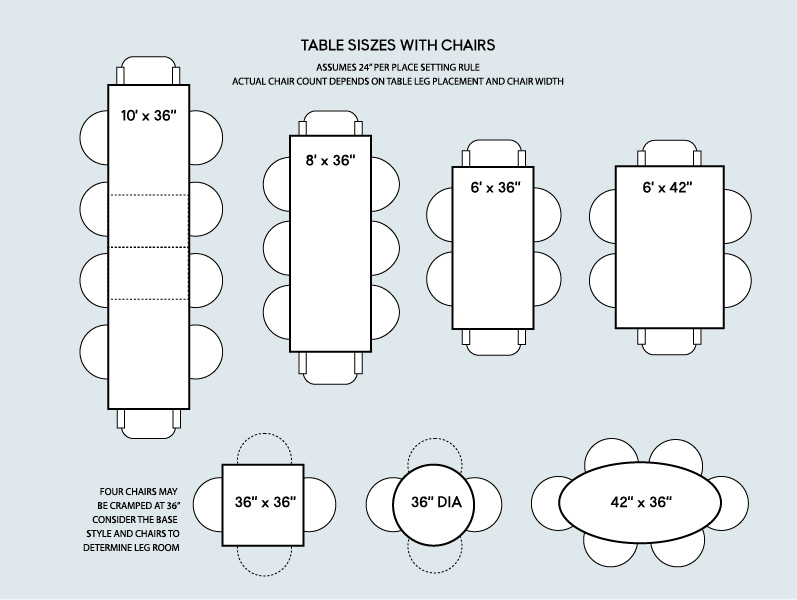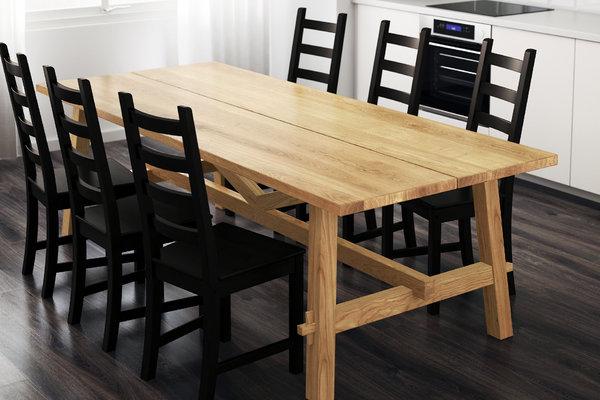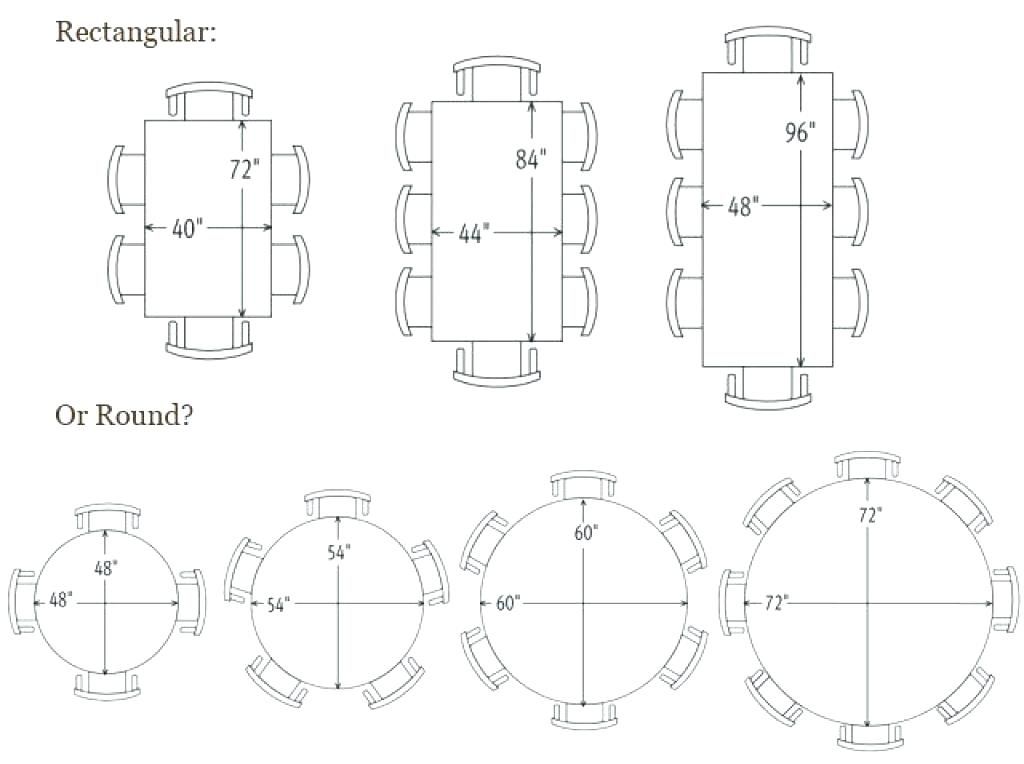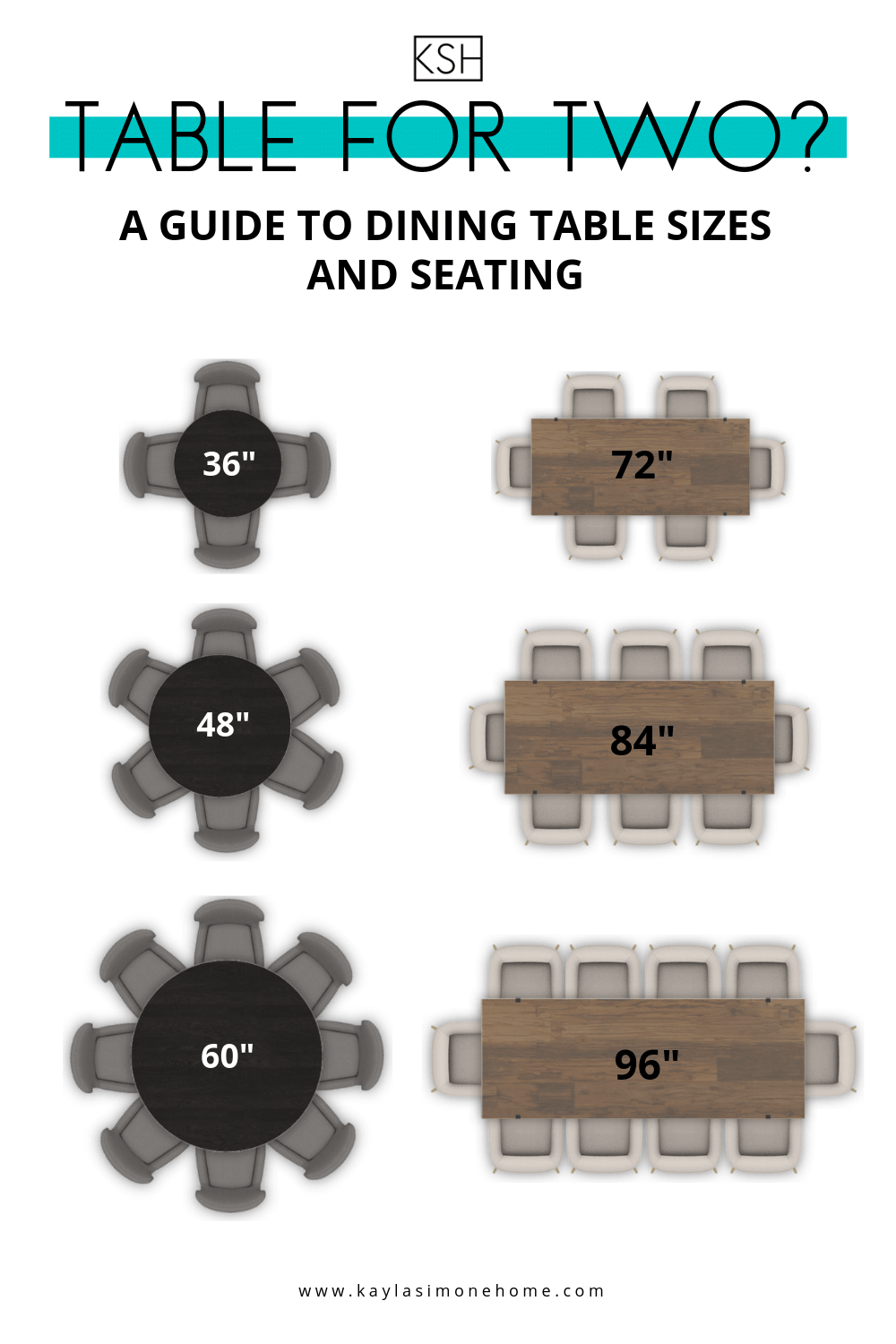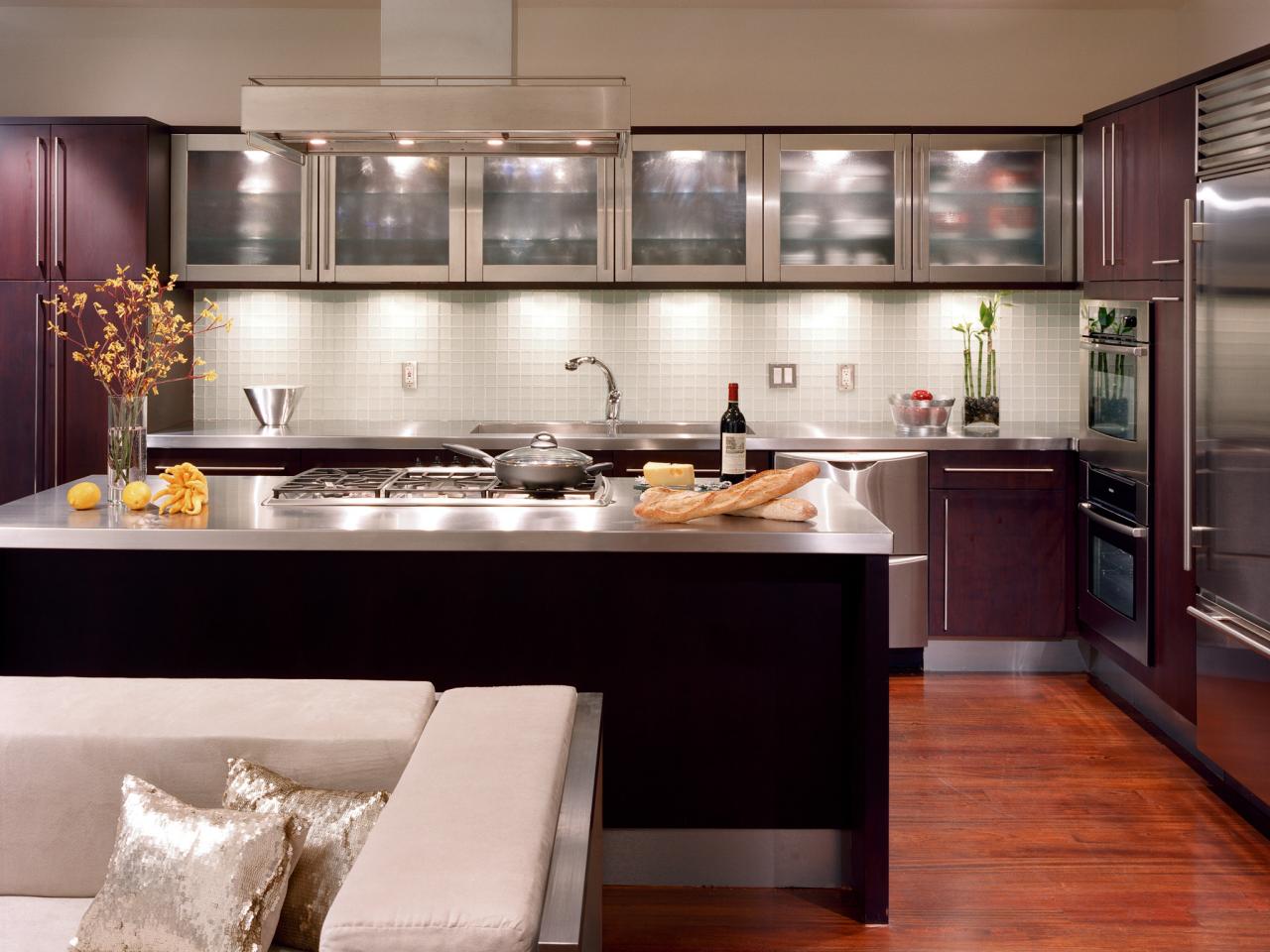Dining Room Size Guide: How to Choose the Perfect Dining Table
When it comes to designing your dining room, one of the most important decisions you'll make is choosing the right size dining table. Not only does it need to fit comfortably in your space, but it also sets the tone for the entire room. Keep reading for our top tips on how to choose the perfect dining table for your home.
Dining Room Size Guide: How to Measure Your Dining Space
Before you start browsing for dining tables, it's important to measure your dining space. This will give you an idea of the maximum size table that can comfortably fit in your room. Be sure to leave at least 36 inches between the table and walls or other furniture to allow for easy movement around the table.
Dining Room Size Guide: Tips for Choosing the Right Size Rug
A rug can add warmth and texture to your dining room, but it's important to choose the right size for your space. As a general rule, your rug should be at least 24 inches wider and longer than your dining table to prevent chairs from catching on the edges. You can also use a larger rug to define the dining area in an open-concept room.
Dining Room Size Guide: How to Determine the Ideal Chandelier Size
A chandelier is a statement piece in any dining room, but it's important to choose the right size for your space. As a general rule, the width of your chandelier should be about half of the width of your dining table. For example, if your table is 48 inches wide, your chandelier should be around 24 inches wide.
Dining Room Size Guide: Standard Dimensions for Dining Furniture
When shopping for dining furniture, it's helpful to know the standard dimensions for each piece. A standard dining table is around 30 inches tall and 36 inches wide, but there are also options for counter-height and bar-height tables. Dining chairs are typically 18 inches wide and 18 inches deep, with a seat height of 18 inches.
Dining Room Size Guide: How to Create a Functional and Stylish Dining Room
When designing your dining room, it's important to strike a balance between functionality and style. Consider the flow of your space and choose furniture that allows for easy movement and comfortable seating. Don't be afraid to mix and match different styles and materials to create a unique and personalized look.
Dining Room Size Guide: How to Maximize Space in a Small Dining Room
If you have a small dining room, it's important to make the most of the space you have. Opt for a round or oval table that takes up less space than a rectangular one. You can also choose chairs with a smaller footprint, such as armless or slim-profile chairs. Utilize wall space for storage with a buffet or floating shelves.
Dining Room Size Guide: Common Mistakes to Avoid When Choosing Dining Furniture
When it comes to choosing dining furniture, there are a few common mistakes that people often make. One is choosing a table that is too large for the space, making it difficult for guests to move around. Another is not leaving enough space between the table and walls or other furniture. Be sure to avoid these mistakes for a well-designed dining room.
Dining Room Size Guide: How to Calculate the Number of Chairs for Your Dining Table
When determining how many chairs you need for your dining table, a good rule of thumb is to allow 24 inches of space for each chair. So if you have a 72-inch table, you can comfortably fit six chairs around it. You can also mix and match different chair styles and sizes for a more eclectic look.
Dining Room Size Guide: How to Choose the Right Size Buffet or Sideboard
A buffet or sideboard is a great addition to any dining room, providing extra storage and serving space. When choosing one for your space, make sure it is no more than two-thirds the length of your dining table. This will prevent it from overwhelming the room and allow for easy movement around it.
The Importance of Proper Dining Room Size in House Design
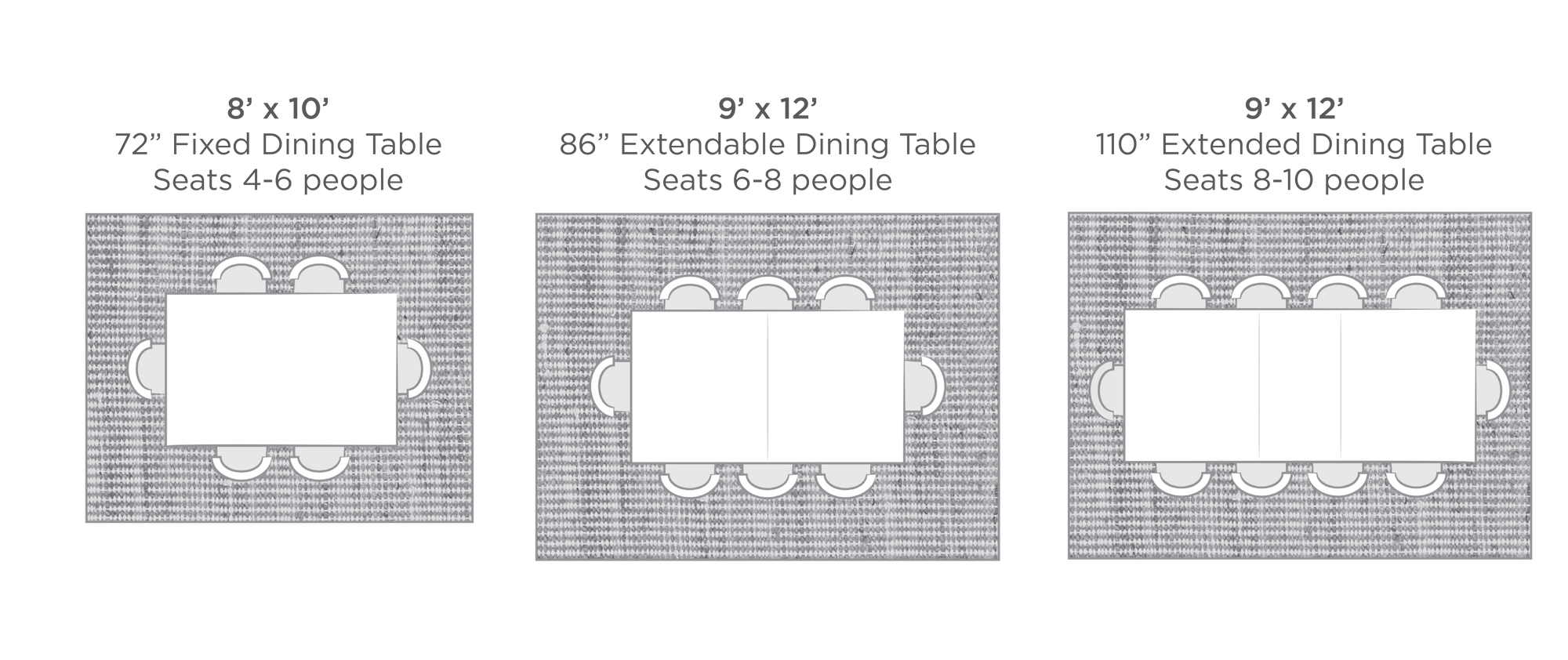
The Role of the Dining Room in Home Design
 When it comes to designing a home, the dining room often plays a significant role. It is where families come together to share meals, host gatherings, and create lasting memories. With its central role, it is essential to consider the size of the dining room carefully.
Proper dining room size
not only affects the functionality and flow of the space but also impacts the overall design and feel of the home. Here's a guide to help you determine the
ideal dining room size
for your home.
When it comes to designing a home, the dining room often plays a significant role. It is where families come together to share meals, host gatherings, and create lasting memories. With its central role, it is essential to consider the size of the dining room carefully.
Proper dining room size
not only affects the functionality and flow of the space but also impacts the overall design and feel of the home. Here's a guide to help you determine the
ideal dining room size
for your home.
Consider Your Lifestyle and Needs
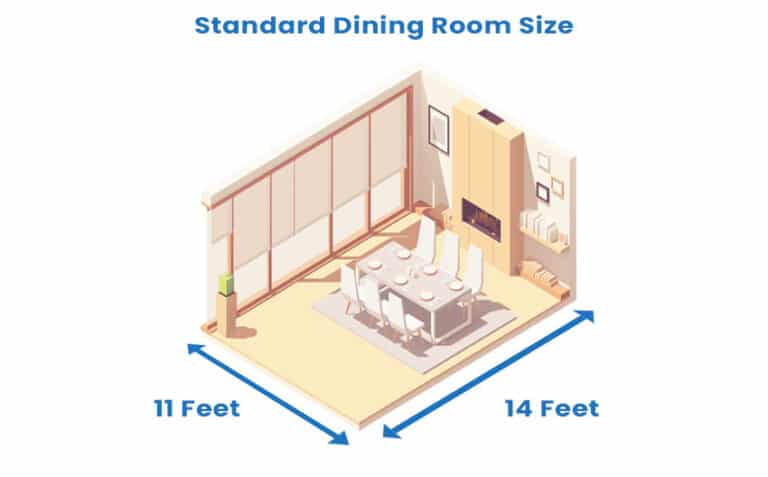 Before determining the size of your dining room, it is essential to think about your lifestyle and needs. Do you frequently entertain guests and require a larger dining space? Or do you prefer smaller, more intimate gatherings with your family?
The size of your dining room
should reflect your lifestyle and ensure that it meets your specific needs.
Before determining the size of your dining room, it is essential to think about your lifestyle and needs. Do you frequently entertain guests and require a larger dining space? Or do you prefer smaller, more intimate gatherings with your family?
The size of your dining room
should reflect your lifestyle and ensure that it meets your specific needs.
Consider the Functionality of the Space
 The
functionality of your dining room
is another crucial factor to consider when determining its size. If you have a large family or frequently host large gatherings, you may need a larger dining room to accommodate everyone comfortably. On the other hand, if you have a smaller family and only use the dining room for daily meals, a smaller dining space may suffice.
Consider how you will use the space
and what you need it for to determine the appropriate size.
The
functionality of your dining room
is another crucial factor to consider when determining its size. If you have a large family or frequently host large gatherings, you may need a larger dining room to accommodate everyone comfortably. On the other hand, if you have a smaller family and only use the dining room for daily meals, a smaller dining space may suffice.
Consider how you will use the space
and what you need it for to determine the appropriate size.
Think About Proportions and Flow
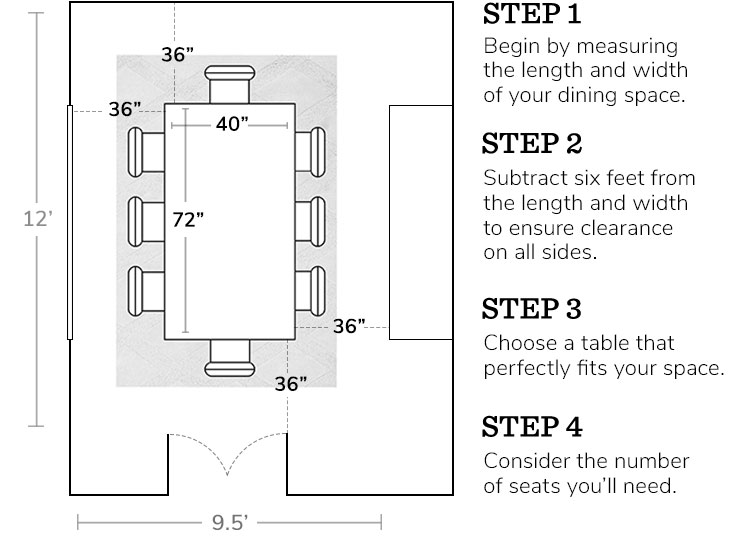 The size of your dining room
should also be proportional to the size and layout of your home. A massive dining room in a small house can feel overwhelming, while a small dining room in a large house may feel cramped.
Think about the flow
of your home and how the dining room fits into it. It should feel harmonious and cohesive with the rest of the space.
The size of your dining room
should also be proportional to the size and layout of your home. A massive dining room in a small house can feel overwhelming, while a small dining room in a large house may feel cramped.
Think about the flow
of your home and how the dining room fits into it. It should feel harmonious and cohesive with the rest of the space.
Take Measurements and Consider Furniture
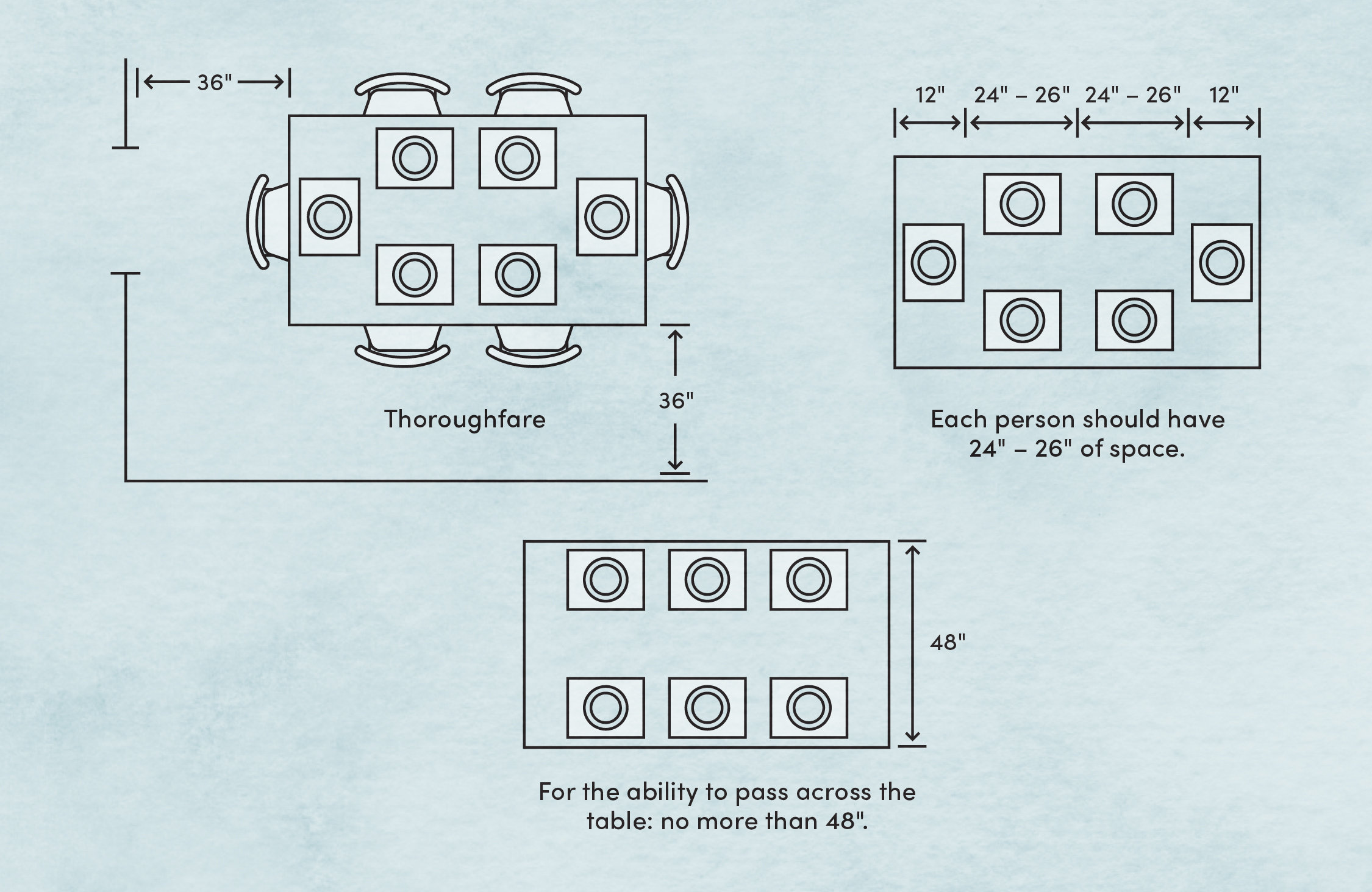 Once you have determined the
ideal size for your dining room
, it is time to take measurements and consider the furniture you will need. Make sure to account for the space needed for chairs, tables, and any other furniture pieces you plan to include.
Having proper measurements
will help you create a functional and aesthetically pleasing dining room.
In conclusion, the dining room is a crucial space in any home, and
proper dining room size
is essential to ensure it meets your needs and fits seamlessly into your overall house design. By considering your lifestyle, functionality, proportions, and furniture, you can determine the perfect dining room size for your home. With this guide, you can create a dining room that is not only beautiful but also functional and tailored to your specific needs.
Once you have determined the
ideal size for your dining room
, it is time to take measurements and consider the furniture you will need. Make sure to account for the space needed for chairs, tables, and any other furniture pieces you plan to include.
Having proper measurements
will help you create a functional and aesthetically pleasing dining room.
In conclusion, the dining room is a crucial space in any home, and
proper dining room size
is essential to ensure it meets your needs and fits seamlessly into your overall house design. By considering your lifestyle, functionality, proportions, and furniture, you can determine the perfect dining room size for your home. With this guide, you can create a dining room that is not only beautiful but also functional and tailored to your specific needs.




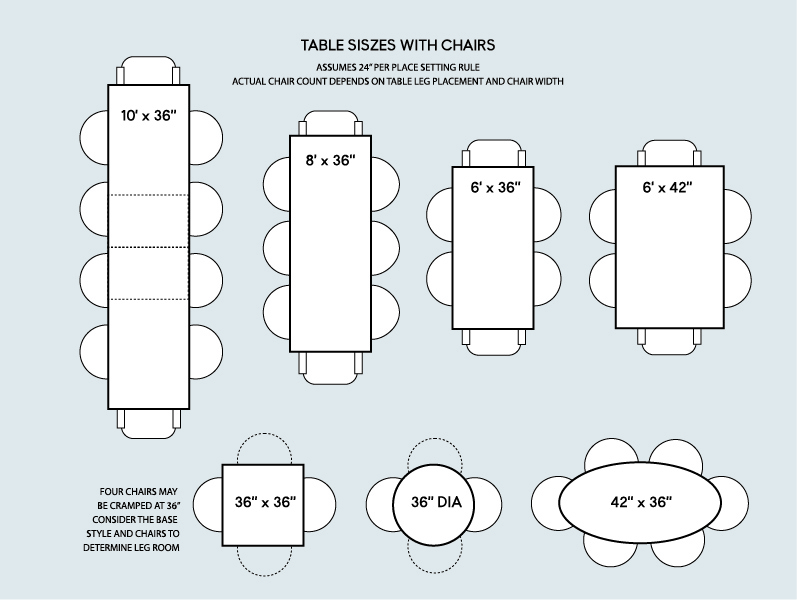



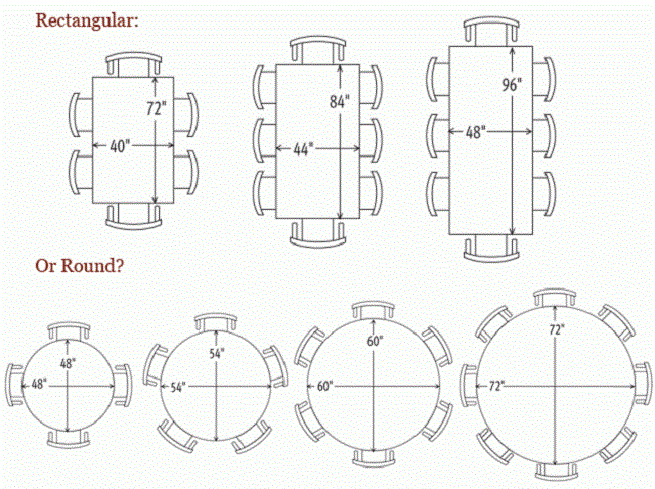
:max_bytes(150000):strip_icc()/how-to-choose-chairs-for-your-dining-table-1313436_final-5becb148e0e04b3198d96933fbad52ec.png)

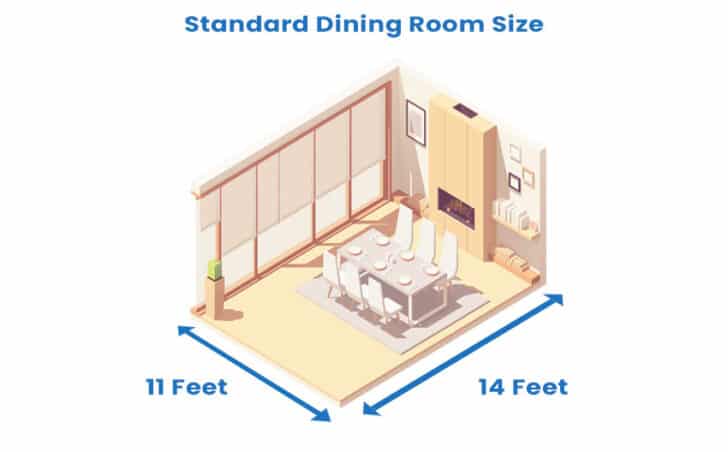


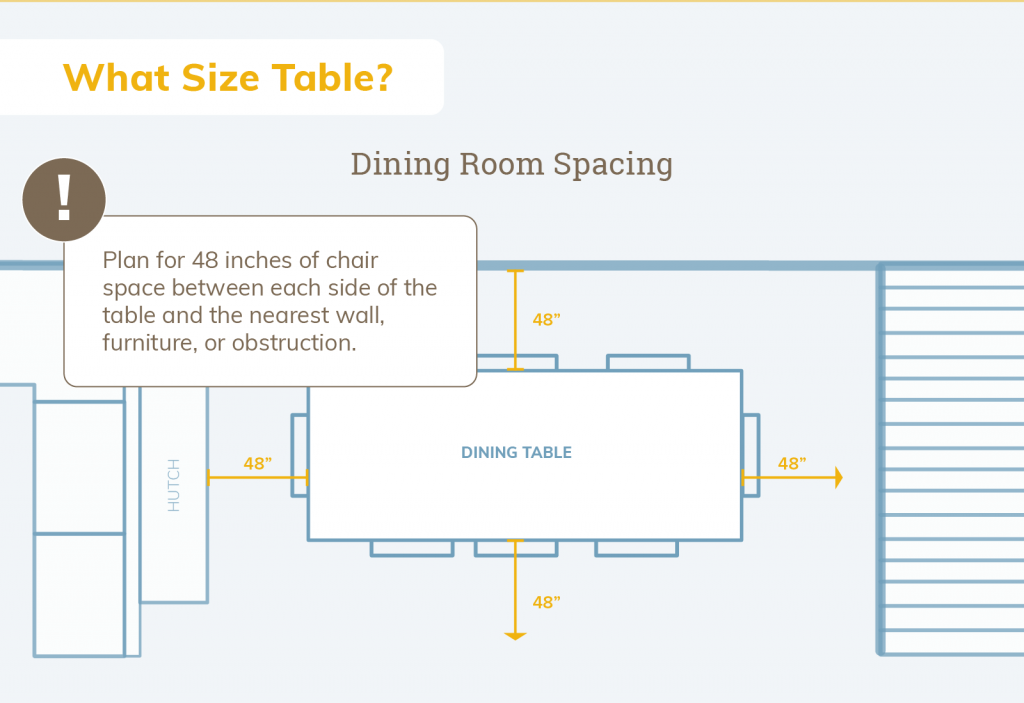





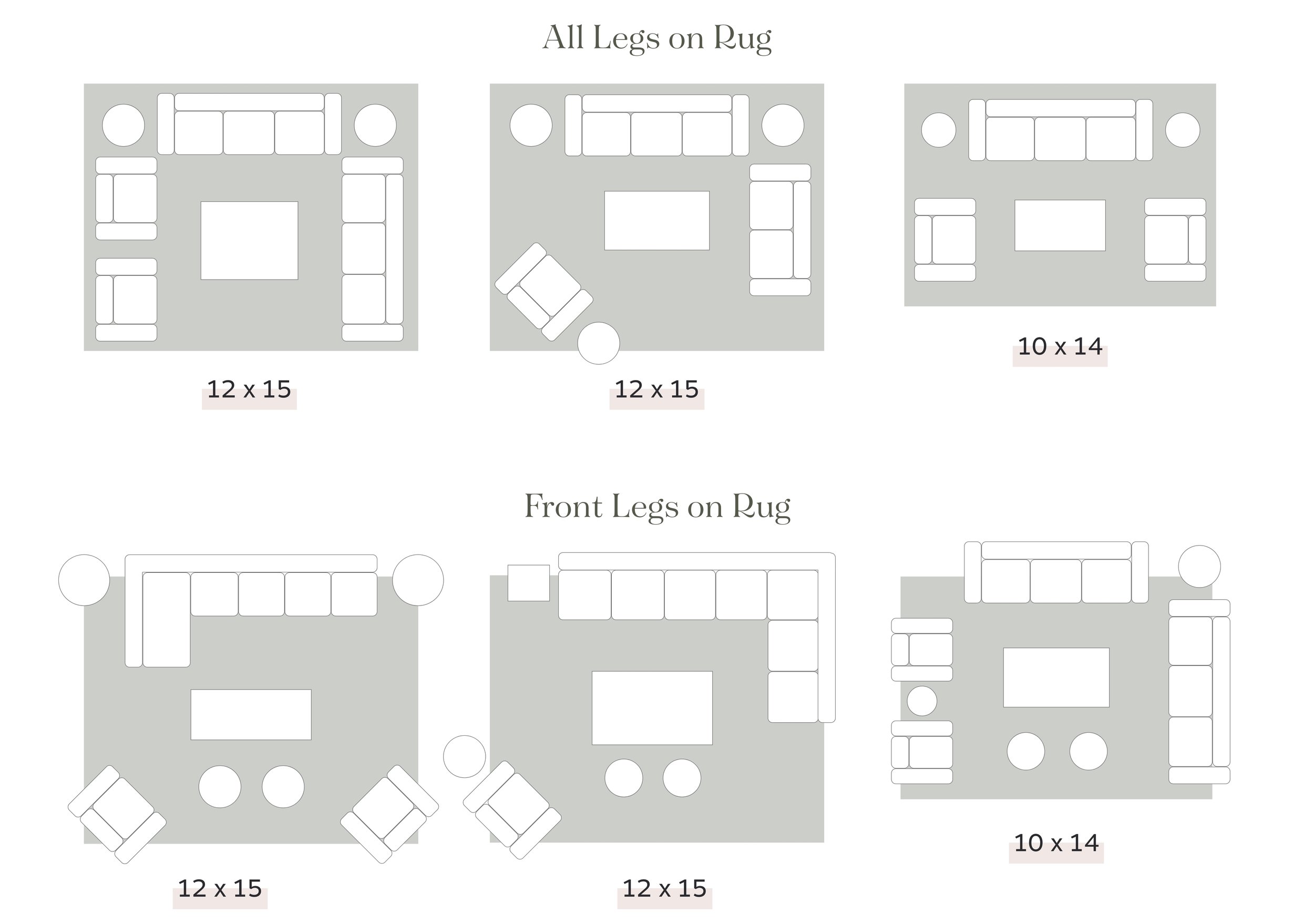

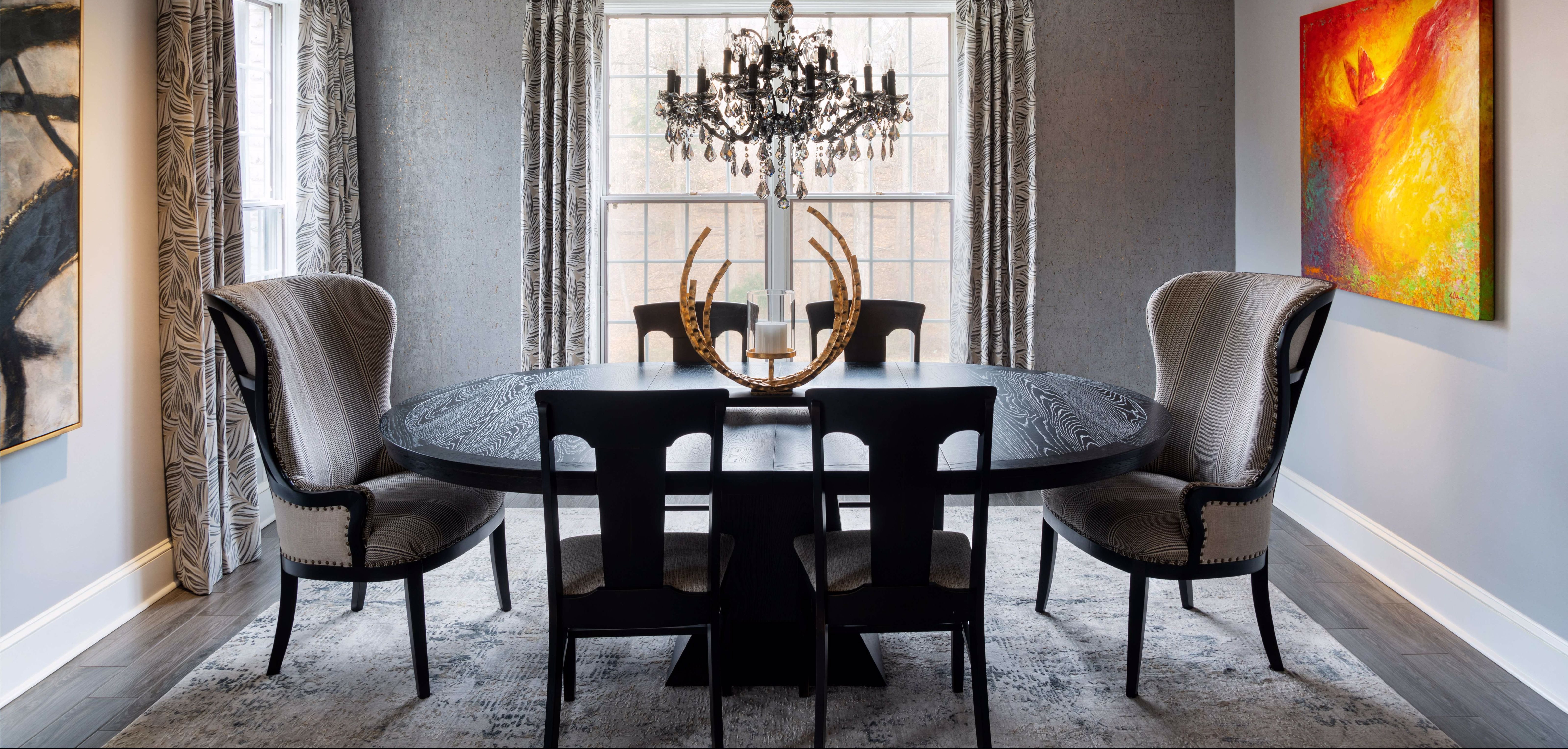


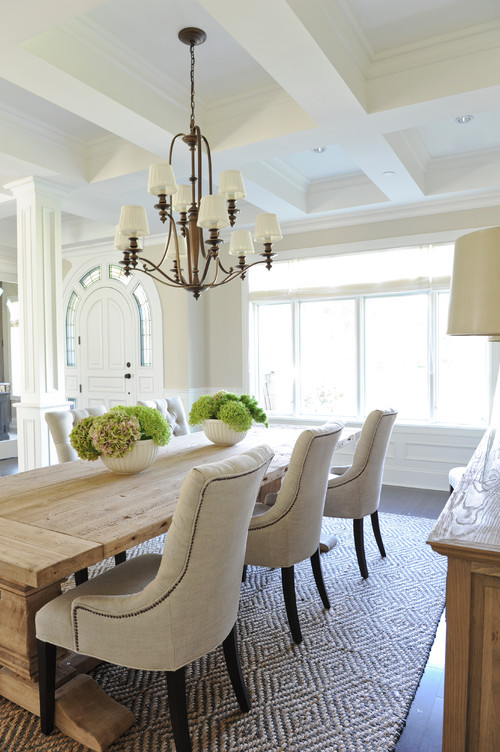



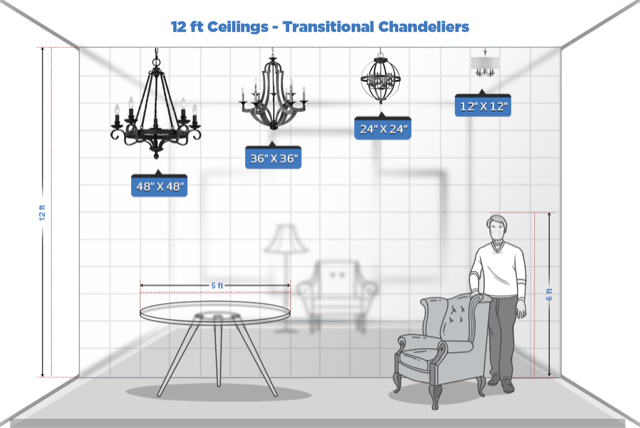
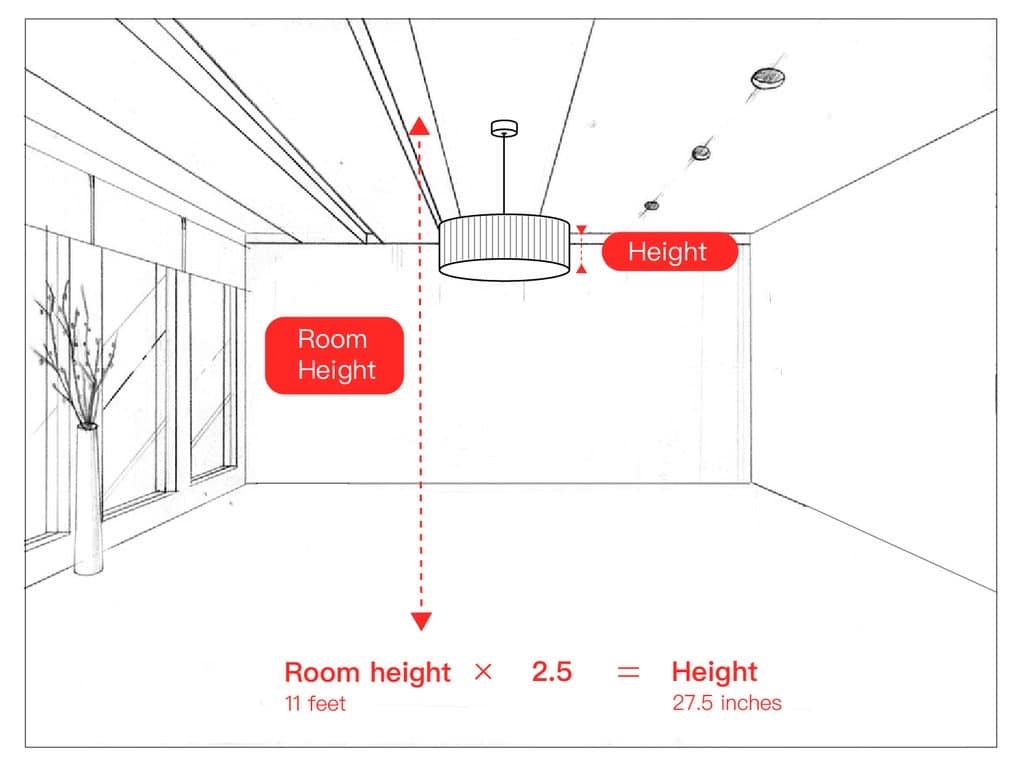

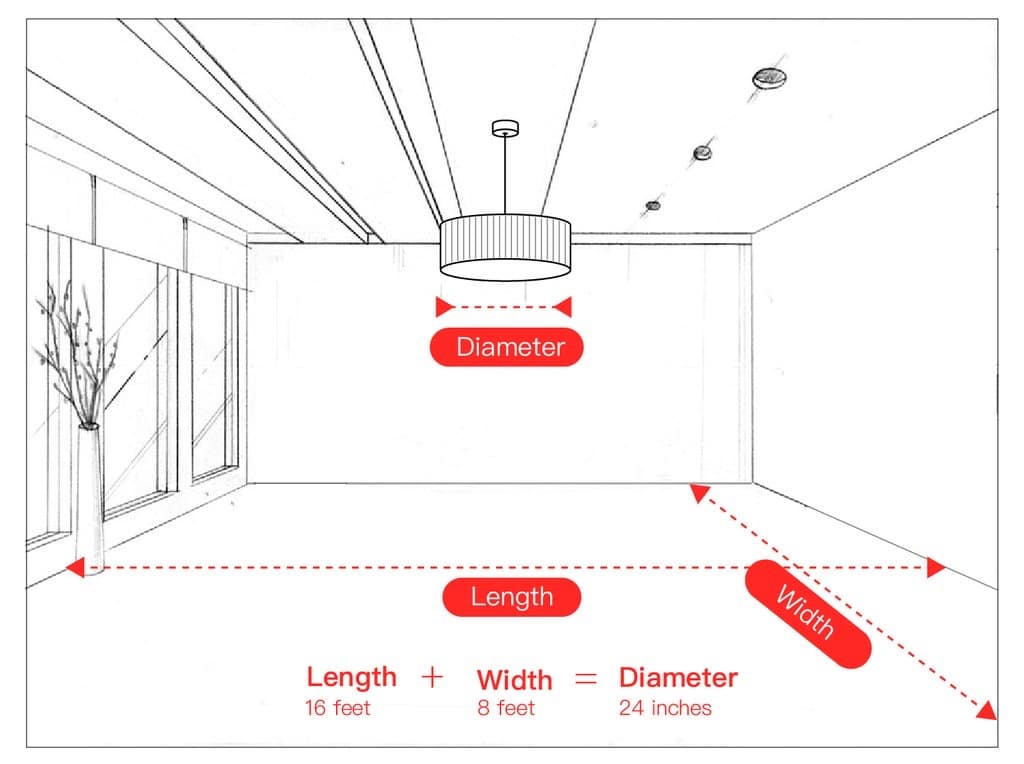
:max_bytes(150000):strip_icc()/Chandelier_0635-0b1c24a8045f4a2cbdf083d80ef0f658.jpg)


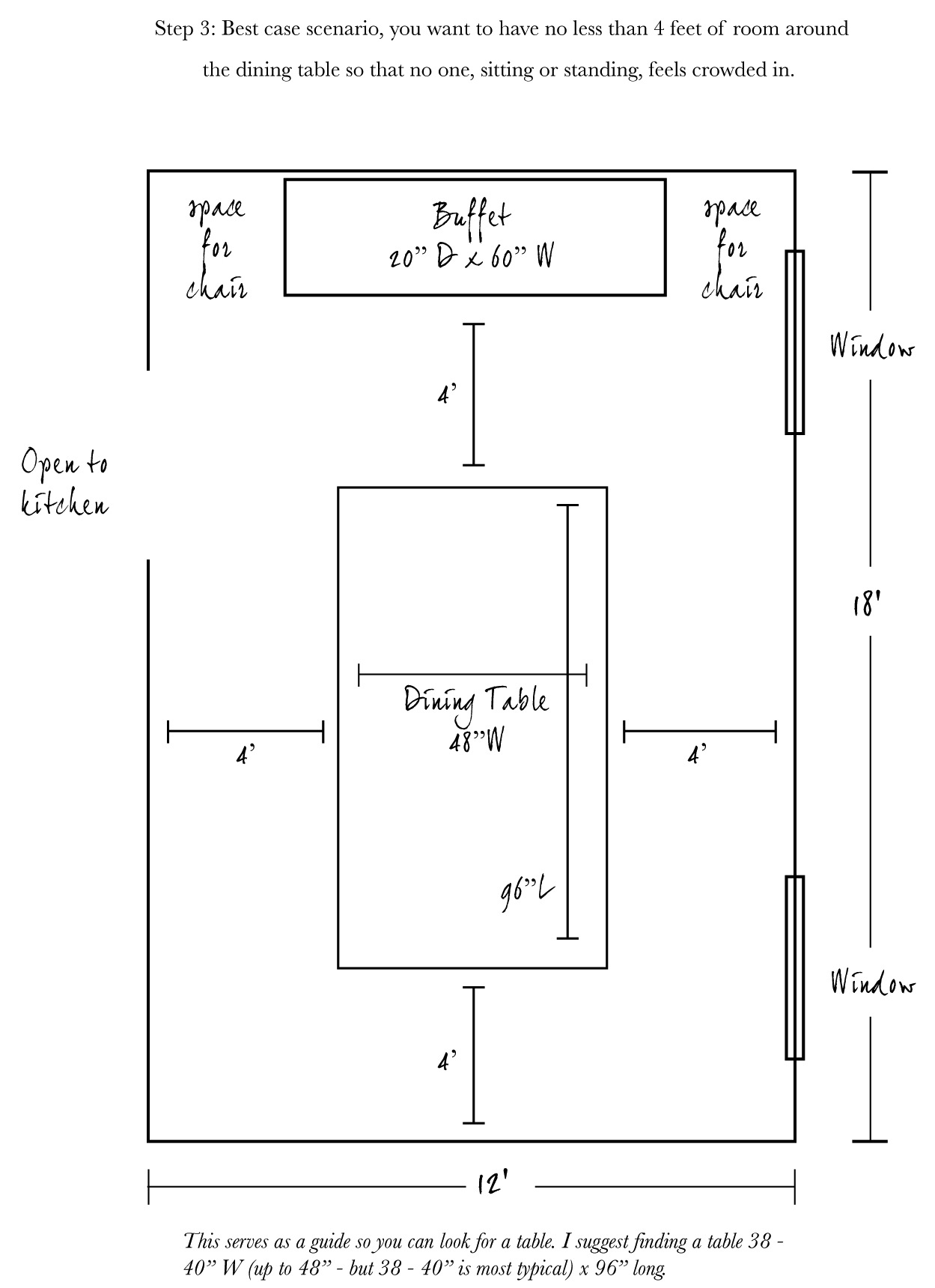
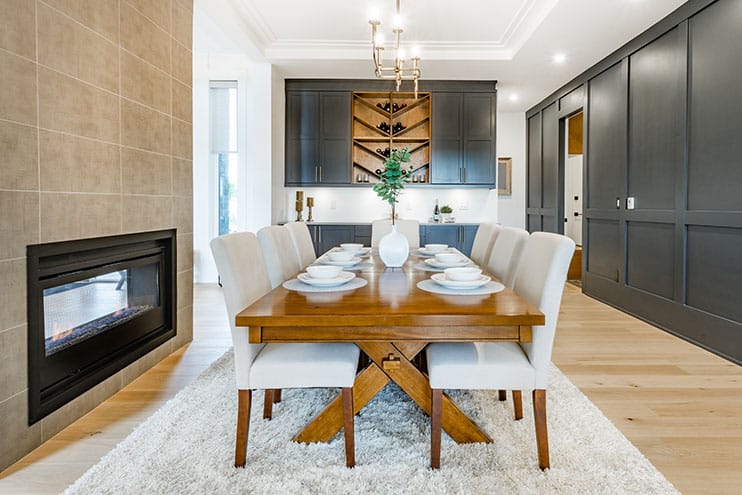
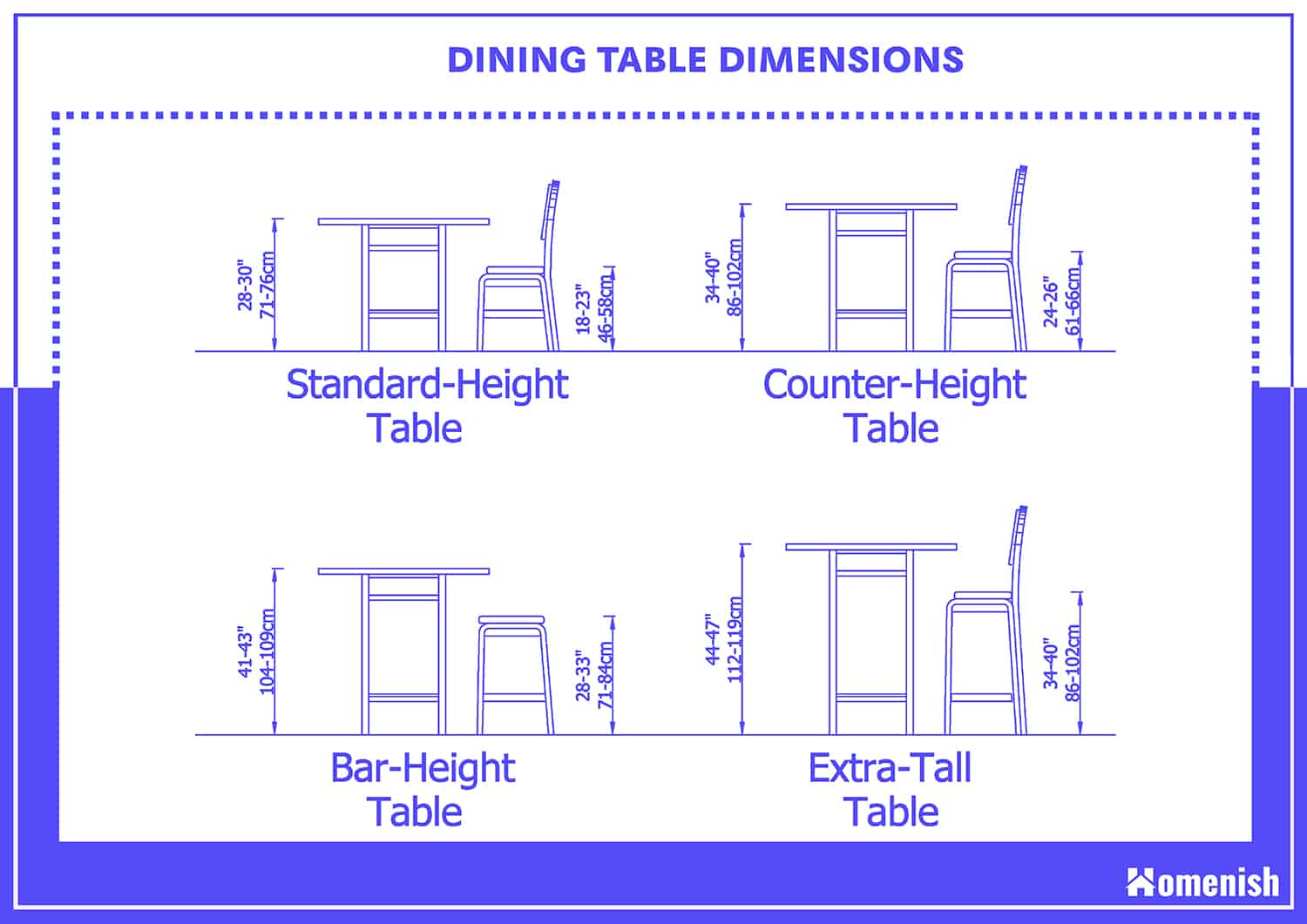



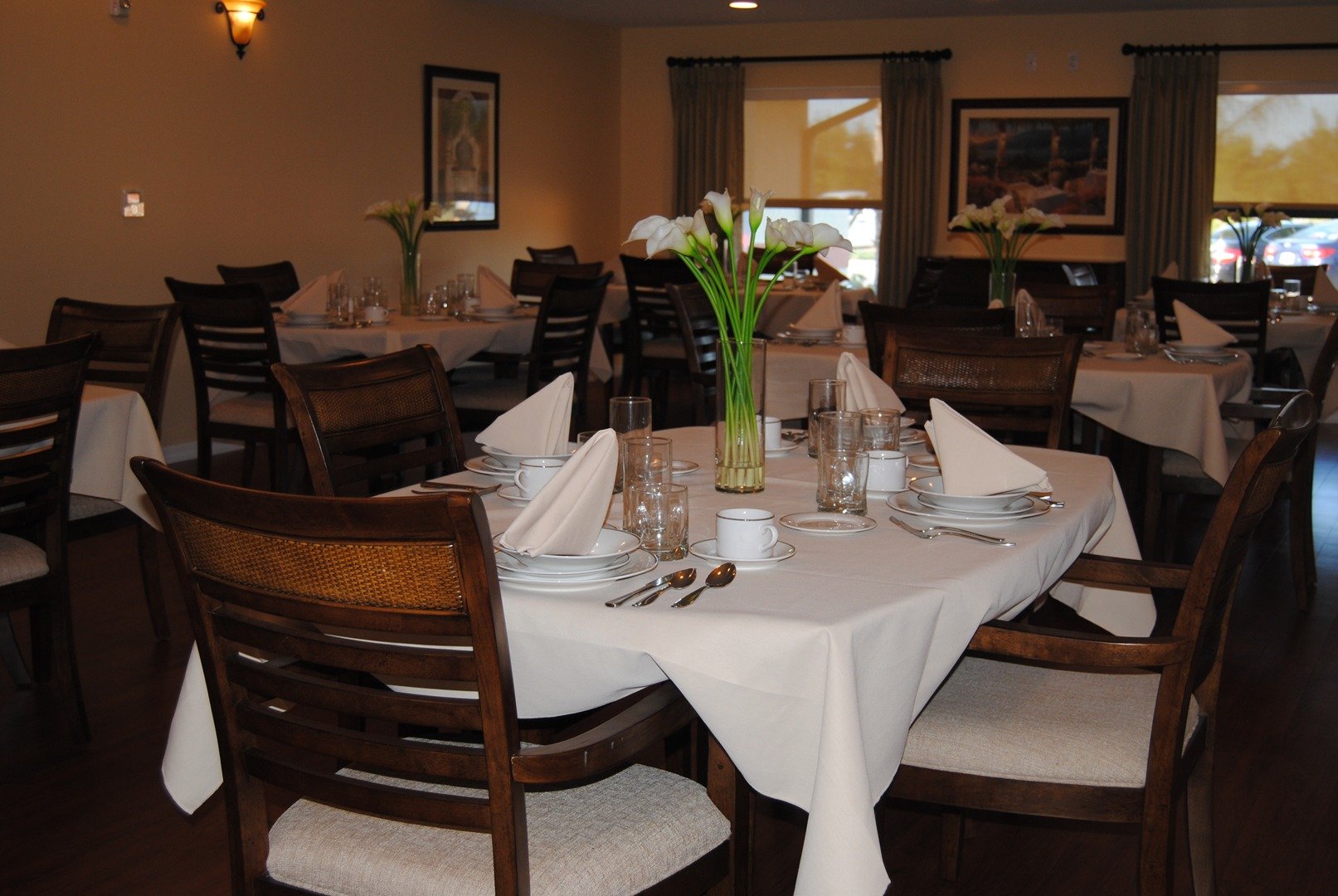
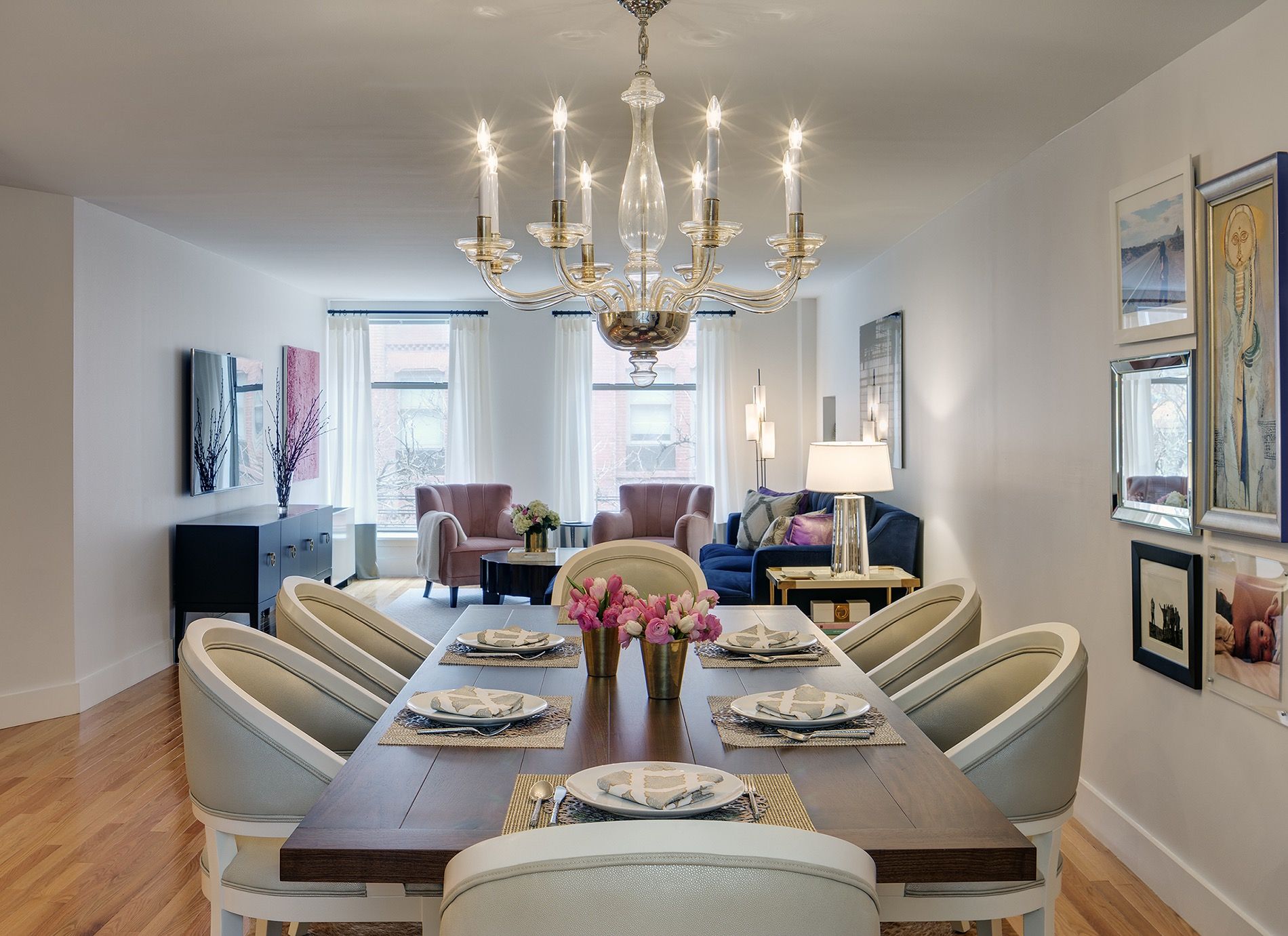
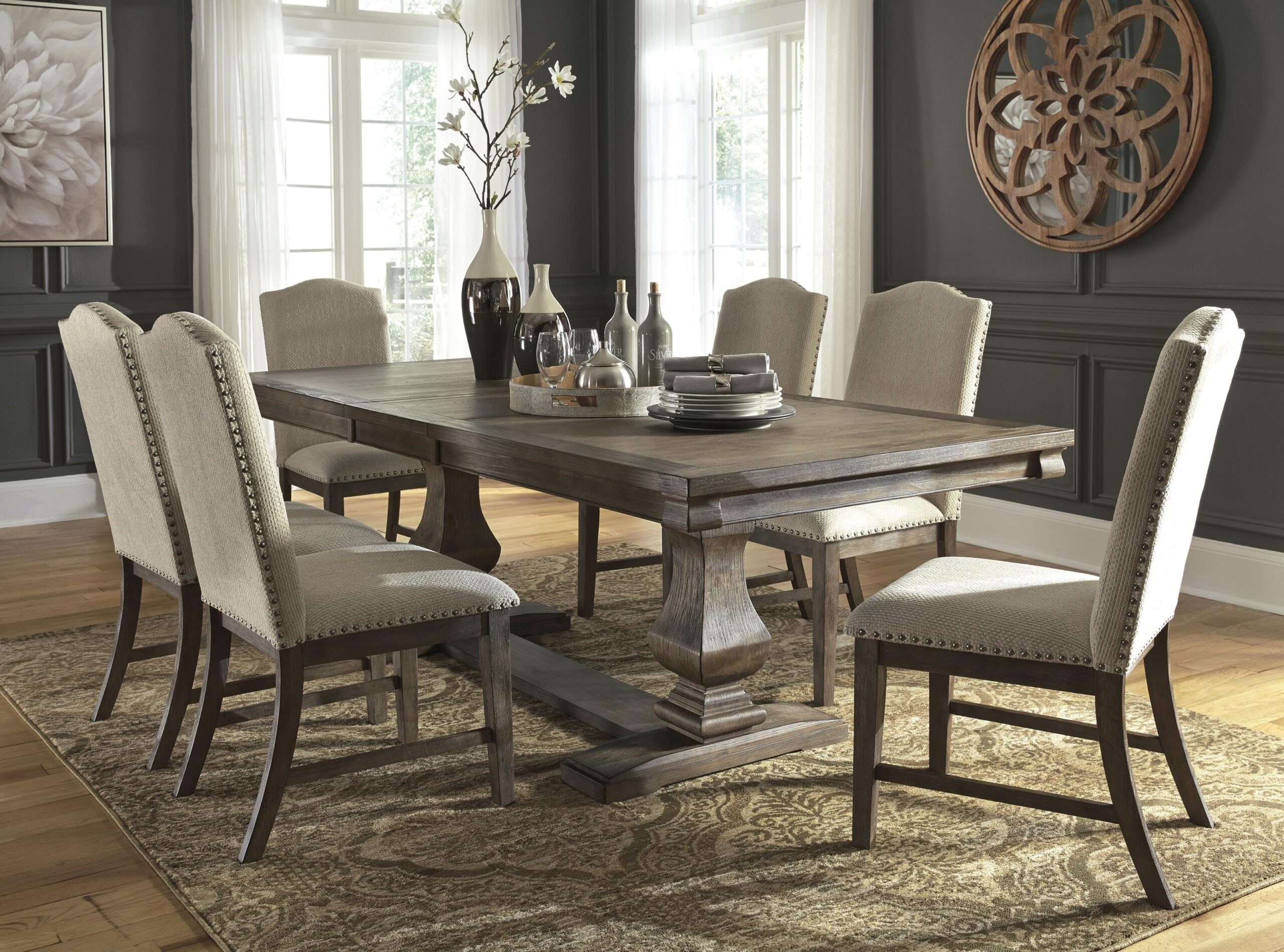



:max_bytes(150000):strip_icc()/open-kitchen-dining-area-35b508dc-8e7d35dc0db54ef1a6b6b6f8267a9102.jpg)


